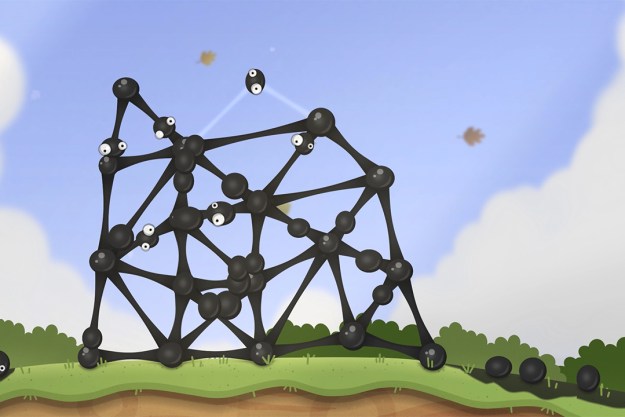When I’m stressed out — and I’m often stressed out — I tend to turn to a go-to video game to calm my nerves. For the past few years, my go-to genre has been one that’s been on the rise recently: The minimalist city builder.
If you grew up playing PC games like SimCity, you’re likely familiar with the concept of a city management game. Usually, players need to create and maintain a bustling metropolis. Traditionally, it can be a stressful type of game that takes on in-depth strategy hooks. One misconnected highway and you could accidentally create an economic crisis. But the new wave of “minimalist” city builders reduce the genre back to its simplest pleasures. They’re games about casually building a picaresque landscape as soothing music plays.
The most recent entry in that genre is Dorfromantik, which exits early access on PC today. The charming title might be the best in the emerging genre yet, combining the Bob Ross-like joys of painting with the tactile quality of board games like Carcassonne. According to the game’s developers, the secret to the genre’s success lies in simplicity designed to give players a break from their complex lives.
Think simple
In Dorfromantik, players slowly build a landscape of interconnected towns, forests, and rivers by placing hexagonal tiles. There are a few rules as to what tiles can be connected, and quests give players more specific objectives to chase, but it can be a low-stakes experience. Rounds generally last around 30 to 40 minutes and that time tends to melt away quickly thanks to the hypnotic nature of its almost-tactile gameplay loop.
“Our main intention was to design something with a low barrier to entry.”
It bears similarities to charmers like Islanders and Townscaper, two recent city builders that focus on relaxing, easy-to-understand gameplay instead of hardcore strategy. Games like that have seemingly become more popular in the past two years and that may not be a coincidence. Luca Langenberg, the co-founder of Dorfromantik developer Toukana Interactive, explains why that style of game is a perfect match for today’s particularly hectic world.
“It’s primarily the simplicity of the games that makes them charming and appeals to many people,” Langenberg tells Digital Trends. “They have stressful lives and cannot afford to invest hundreds of hours into complex games, creating demand for games with less complexity which in turn leads to more relaxed experiences.”

To create Dorfromantik, Toukana had four main design pillars. One of those was labeled “Minimalism and Simplicity.” In addition to focusing on making its central tile-placing system as satisfying as possible, the studio began stripping away elements that might usually put pressure on players, like timers.
“All of us love strategy games, but can’t always afford the time to dive into complex game systems, and it’s always somewhat difficult to get back into them if you haven’t played in a while,” says Langenberg. “Our main intention was to design something with a low barrier to entry, while still providing a challenge and keeping players motivated long-term. We wanted to avoid having a cluttered UI, or a lot of text boxes and explanations, the core mechanics had to be easy to communicate.”
An artist’s touch
Finding the right gameplay hook was important, but aesthetics can make or break an experience like this. A game like this needs to have a certain vibe if it’s going to chill players out — it’s perhaps why so many games in the genre tend to use rich colors and soft music. Dorfromantik is no different than its peers in that regard. When players finish a level, they can look at the countryside they’ve created, which looks like a quaint landscape painting filled with details.

Toukana comes back to the word “simplicity” when describing its artistic vision for the game. The developer looked to create a sense of uniformity in its user-created terrains, which is no easy task considering that players have to create their landscapes one randomly dealt tile at a time. The end result is seamless though, as even a poorly placed tile can still look intentional in the grand scheme of the final image. To achieve that, the team looked to the art world, taking inspiration from photographs, paintings, and even toys.
“We found aspects in certain areas of so-called naïve art that we liked and tried to align the representation of trees and houses, for example, with them,” Langenberg says. “For the design of textures and colors, we looked more towards impressionist landscape painting. This is most noticeable in the cornfields, where we tried to use different color nuances to get vibrant color mixtures within the textures.”
“Another big influence was wooden toys which mainly influenced the look of buildings, as well as ships and trains,” he adds.
Balancing beauty and challenge
While Langenberg sees the appeal of relaxing games like Dorfromantik, he doesn’t believe that means minimalist experiences like it can’t have challenges. In a standard round, players only have so many tiles in their stack. They’ll need to complete quests and make “perfect” placements to add more to the stack. It can get a touch tense as the tile count dips into single digits.

The 1.0 release of the game includes several modes, each of which caters to different player needs. There’s a hard mode that hits players with more complicated tiles, a quick mode that’s built for short high-score chases, and a creative mode that lets players freely create with no restrictions at all (when hitting a “game over” in a normal round, the game even lets players continue that landscape in creative mode). For Toukana, finding that balance between casual play and challenge would be instrumental if the game was going to be more than a cozy curiosity.
“We always divided the game into three layers of player motivation,” says Langenberg. “First one being the intrinsic motivation of simply creating your own beautiful landscape, with the second one being the core game loop with a classic high score system. Balancing between the ability to build something beautiful and actually having a fun and challenging game loop was one of the hardest aspects of creating Dorfromantik, while also being a key part in our vision to make the game as replayable as possible.”
Based on my time with Dorfromantik, Toukana successfully found that balance. It’s a game that I play just about every single day as I wind down before bed. And while I turn it on as a relaxing comedown, I still find myself eager to beat my high score and create an even bigger landmass. I’m able to play with strategic intent without my blood pressure skyrocketing. The more complicated my daily life becomes with age, the more I’m learning to value games where I set the challenge for myself.
Dorfromantik is out of early access today and available on PC.
Editors' Recommendations
- The Nintendo Switch just got 2 surprise games — and they’re both worth grabbing
- This $15 Steam game is a must-buy for Zelda fans
- This upcoming PC game brings Lego building to the real-time strategy genre
- Open Roads is a short family drama video game that leaves a big impact
- We played tons of games at GDC 2024. Put these ones on your wish list




